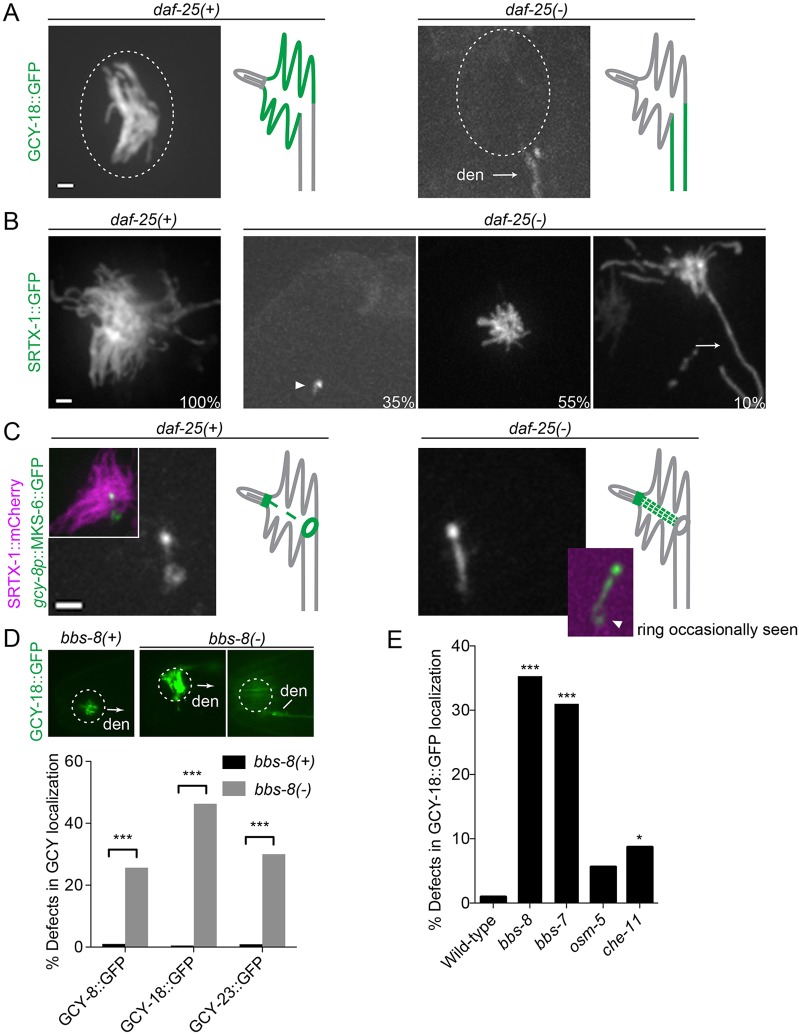Fig. 6.
The daf-25 and bbs-8 mutants show defects in the localization of guanylyl cyclases. (A) Localization of guanylyl cyclases in wild-type and daf-25(-) worms. Guanylyl cyclases, represented here by GCY-18, are absent from AFD fingers of the daf-25 mutant, and are seen along the dendrite (den) instead. Dotted ovals indicate the position of the finger compartment. (B) daf-25(-) worms show defects in finger formation. The numbers are the percentages of worms with each phenotype (n = 100). The arrowhead indicates a complete absence of fingers, and the arrow points to an extra-long finger. (C) The transition zone protein MKS-6 displays an altered localization in daf-25 worms, as it appears stronger at the filamentous structure connecting the cilium and the ring structure (arrowhead indicates the signal occasionally seen in the ring structure in the mutant). Scale bars: 1 µm. (D) Localization of a representative guanylyl cyclase (GCY-18::GFP) in wild-type and bbs-8 worms. GCY-18 is localized specifically in the finger compartment of wild-type AFD neurons, but accumulates in the fingers and along the dendrite of the bbs-8 mutant. In the image on the right for bbs-8(-), the plane was focused on the dendrite to highlight the accumulation there, this neuron still has GFP signal in the finger compartment. Arrows indicate the direction of the dendrite when it is not visible. The graph shows the percentage of AFD neurons with defective localization of each guanylyl cyclase (n>100). (E) Mislocalization of GCY-18 is a prominent phenotype in bbs mutants (bbs-7, bbs-8) but not other mutants that affect IFT (osm-5 and che-11). The bar graph shows the percentage of AFD neurons with defective GCY-18 localization (n>100). *P<0.05; ***P<0.001 (compared with wild-type, χ2 test).

